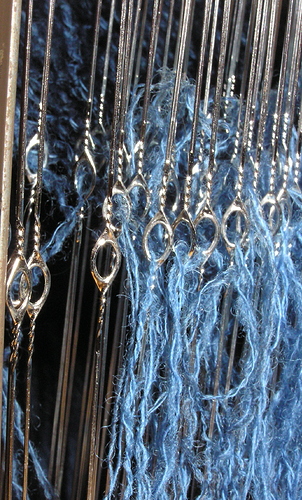The below comment was mostly in response to this comment: Flettner balloon and VAWT side by side - #14 by PierreB but I think it is better here.
I am not aware of any mechanism that allows a single continuous loop to be reeled in and out while the loop is being driven. I am inclined to think that is mathematically/geometrically impossible, it would break the loop. To achieve that, I think you probably need a connection point somewhere in the loop, that is then caught by a mechanism, decoupled, and then two drums each take one end of the tether and reel them in at different speeds.
Assuming for example the airborne and generator pulley are both rotating clockwise and are driven by or drive the tether at the same speed and you want to maintain that, also assuming that the two additional drums are located below the loop, one closer to the airborne pulley and one closer to the generator pulley, you’d decouple the two ends of the loop and fix them on one drum each, then keep the drum closest to the airborne pulley static while the one closest to the generator matches the rope drive speed and wraps the tether around itself. That would be powered descent then.
While the kite is on the ground, you could rotate the airborne and generator pulley counterclockwise to wrap the tether around the drum closest to the airborne pulley and unwrap it from the drum closest to the generator pulley, to make it so that during ascent the airborne pulley can rotate clockwise. Powered ascent is still not possible I think like this. For that I think the generator pulley needs to spin, and for that the drum closest to the generator pulley needs to spin, which would be counterproductive as that would wrap the tether around that drum again – or you could make a loop at the end of that tether and connect it to the tether that is exiting from the other drum and let the speed that this loop slides along the other end of the tether control the reel out speed, but I don’t know how that would work
If you fill the balloon with a lighter than air gas to help with the launch it will be blown down in high winds, so you could only launch in low winds. How much this is a problem depends on the buoyancy of the balloon and the strength of the wind.
You could instead use a different lifting mechanism that does depend on wind. Best would probably be to spin the balloon already while it is on the cradle, but that would then also start unreeling the loop, if the loop was wrapped around the airborne pulley. Better then to add an additional airborne pulley that the loop goes around that can then be decoupled from the airborne pulley while not producing power, on the cradle and during ascent and descent.
With the additional airborne pulley you don’t need the rope drive to be moving during ascent and descent, so you can keep the loop intact. You can decouple the extra pulley from the airborne pulley and reel the loop in or out. You still can’t do powered ascent and descent, or powered from the ground generator at least.
As sketched, I expect the structure to collapse in the same way that the Magenn structure collapsed.
I don’t like the concept, or balloons instead of kites in general. I do like rope drives and I think they make a good match with rotating balloons. So I think my concept for a rope drive here is interesting at least for @WindFisher. IIRC they use four drums, they could instead use 2 ground based pulleys and eliminate the need for discontinuous production. There’s still the problem of no powered ascent though, but they use helium for that. …Or wait, can you extract much more energy from the pull of the balloon than from its rotation?
